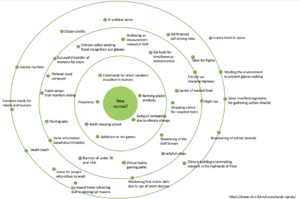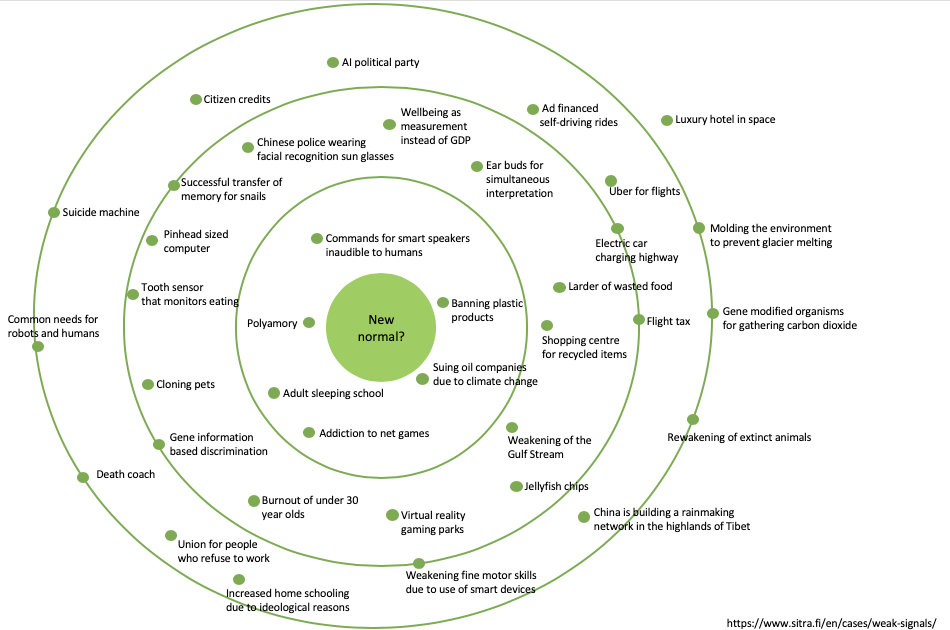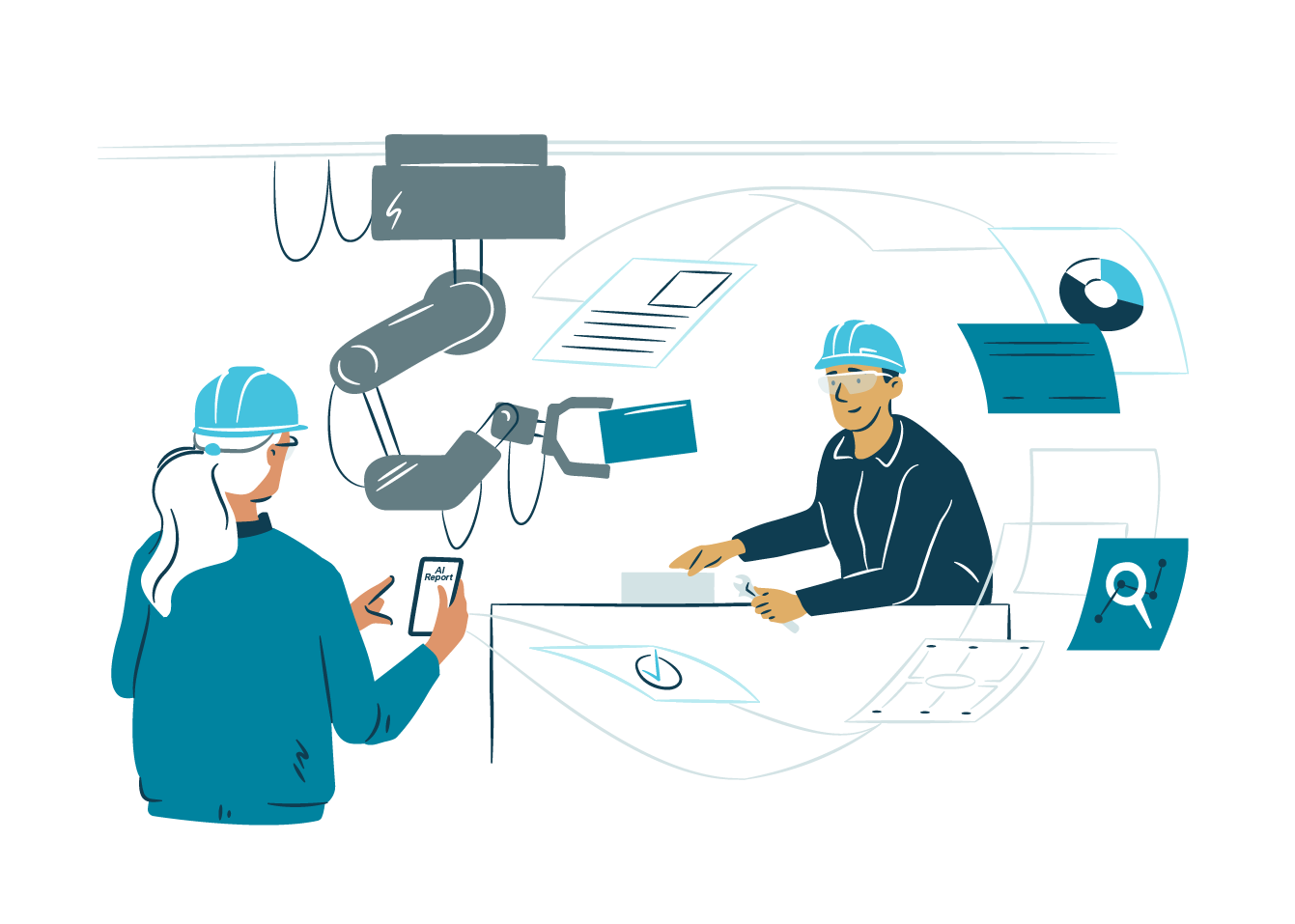If you only look at megatrends, you can miss opportunities that are hidden beneath the surface. Weak signals are often the first indicators of potential change.
A weak signal can be defined as an emerging issue, not easily identified but one that has potential future impact.
Prior to 2007, there were weak signals around rich graphical user interfaces in consumer devices alongside other signals pointing to the rise in touch interfaces. Apple famously recognised these signals ahead of other more established mobile phone companies. The iPhone launched in 2007 and the rest, as they say, is history. In the example below there are a number of weak signals that The Finnish Innovation Fund, Sitra gathered during 2018 as the basis for future discussion. Some of these are macro issues that are likely to impact society in the long term, however, others such as a potential ban on all plastics could impact many of us both personally and professionally in the medium to long term.

Figure 1: Weak signals, Sitra
In a business context, it is crucial to identify the weak signals related to your organization since they point to the direction in which your industry is moving. Identifying weak signals that are relevant to your organization or business often produces surprises. These weak signals require sensitivity and attention to be able to identify changes required to stay ahead of the competition. Identifying weak signals is therefore critical in developing a competitive business that is prepared for future challenges as we have seen in the iPhone example above.
Characteristics of weak signals
Novelty: a weak signal is an indicator of something new or a new perspective on a known subject.
Surprising: a weak signal is surprising to its interpreter.
Challenging: a weak signal forces one to challenge existing assumptions and is therefore often difficult to detect or easy to overlook.
Significant: a weak signal suggests something that may have an impact on the future.
Delay: a weak signal describes something that is not yet significant but requires time to mature.
Source: Sitra: Mikko Dufva
Identifying weak signals
An open mind is key to identifying weak signals as our personal bias and views will tend to guide our thoughts. Placing yourself in unfamiliar surroundings is a good technique as well as researching futurologists and industry-specific publications and papers. Think as wide as you can as often the most impactful signals are found at the periphery or in areas that lightly touch your organization or industry.
Another classic example of identifying weak signals that produced a market leading product is the design of the original Mazda MX5 sports car (although some of this story may be an ‘urban legend’) In the late 1970’s Mazda launched a design competition between their internal design teams in the US and Japan with the objective of recreating the magic of classic British sports cars. So, the story goes that the US team decamped to a Caribbean island with the task of designing the new car. Their brief was to ‘take as long as it takes’ to design the new car. The combination of unfamiliar surroundings and a relaxed unpressured atmosphere together with talented designers resulted in the MX5 which went on to be highly successful for Mazda winning many top awards.
Interpretation
Once you have mapped the weak signals that have the potential to impact your organization or business, it is important to spend time analysing and interpreting them. Data is nothing without interpretation. Think about how they will change your customers or your employees and how they might combine with other signals or trends to accelerate change.
Take another look at the diagram above and think about your business context. Choose one weak signal and start to ponder and speculate what kind of impact that signal would have on your business or industry. This is often better done in a small group – open your mind and you may well be surprised at the outcome!
At Gofore our consultants work with our clients to help them identify the weak signals that have the potential to impact their future business or organization. Although we have yet to decamp to a Caribbean island, previous projects have resulted in organizational or cultural change programs and new service and business design initiatives. One common denominator in all these projects is that the outcome is always very different from what was expected.
More reading on the theme of weak signals:
https://tulevaisuuspaiva.fi/in-english/
https://www.sitra.fi/en/topics/weak-signals/



